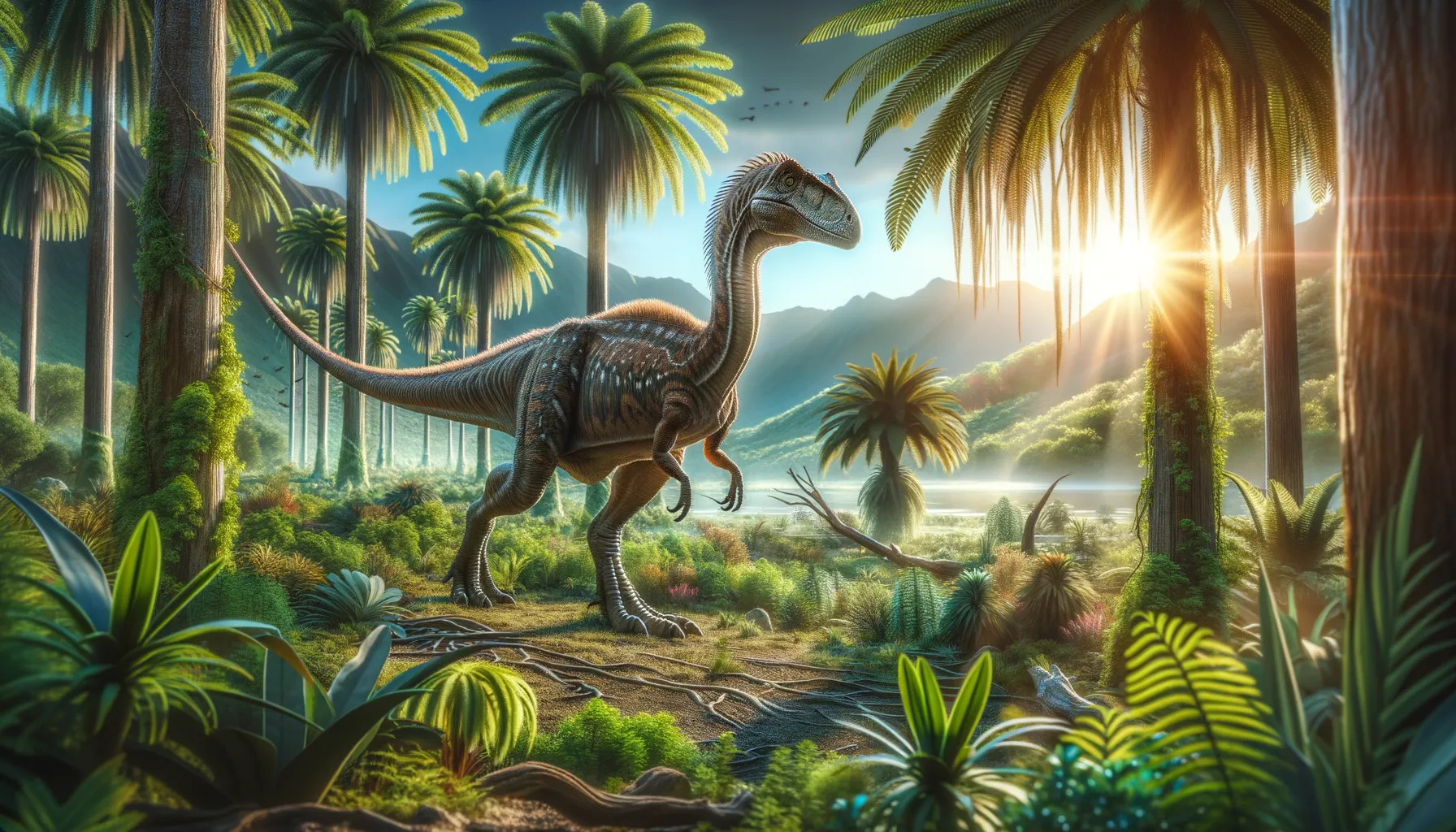
Archaeornithoides
A glimpse into the bird-dinosaur link!
Period
Cretaceous
Length
About 1 meter long.
Height
Approximately 30 centimeters tall.
Weight
Roughly 1 kilogram.
Archaeornithoides is a small theropod dinosaur believed to have had bird-like features. It lived during the Late Cretaceous period in what is now Mongolia. Known from limited fossil records, its identification remains somewhat uncertain, but it provides crucial insights into the transition between non-avian dinosaurs and birds. This dinosaur's modest size and possible feathered appearance suggest it might have been an agile ground-dweller or a tree climber.
Diet
Archaeornithoides likely fed on small vertebrates and insects. Its diet would have included anything it could catch easily and digest with its modest size.
Hunting
This dinosaur probably employed stealth and agility to capture its prey. Its agile nature provided an advantage in catching smaller, quick-moving creatures within its habitat.
Environmental challenges
Archaeornithoides lived in a dynamic and possibly harsh environment that required adaptation for survival. It would have faced threats from larger predators, requiring effective camouflage or quick escapes. Changes in food availability could also have posed a significant challenge, mandating dietary versatility.
Speed
Likely agile but exact speed unknown.
Lifespan
Estimated to be around 10 to 15 years.
First discovery
Discovered in 1992 in Mongolia.
Fun Facts
- Archaeornithoides is a genus of small theropod dinosaurs that lived during the Late Cretaceous period.
- This dinosaur's name means 'ancient bird form', reflecting its avian-like features.
- Archaeornithoides was likely covered in feathers, hinting at the close evolutionary link between theropods and modern birds.
- It was a small dinosaur, about the size of a modern-day pigeon.
- Fossils of Archaeornithoides have been found in what is now Mongolia.
- Archaeornithoides is thought to have been an agile and quick-moving dinosaur.
- This dinosaur's teeth suggest it might have been an insectivore or small carnivore.
Growth and Development
During its growth, Archaeornithoides would have undergone changes that equipped it for survival in its environment. Its development likely included the strengthening of limbs for increased agility and quick movements. Developmental stages would have been rapid, allowing individuals to take full advantage of their environment as soon as possible.
Habitat
Archaeornithoides inhabited a region that is currently part of the arid expanses of Mongolia. Then, it might have been a mix of open ground and forested areas, providing both concealment and space for foraging. The climate would have influenced its daily behavior, potentially making it an adaptable creature in its locality.
Interaction with other species
Archaeornithoides would have interacted with both predators and smaller prey within its ecosystem. It likely needed to be wary of larger theropods that shared its habitat. Interactions with its own species could have included competition for food and mates.
Natural lifespan
It may have lived up to 15 years naturally.
Reproduction
Reproduction in Archaeornithoides was likely oviparous, with eggs laid and likely concealed or protected in nests. Parental care patterns remain speculative, but they may have been present to some degree given its small stature.
Social behaviour
The social behavior of Archaeornithoides remains speculative due to limited evidence. If they were indeed social, they might have formed small groups or pairs, either for foraging or protection against predators. This behavior could have facilitated information sharing about food and shelter.
Fossil locations
The fossils of Archaeornithoides have been found primarily in Mongolia, giving paleontologists significant insights into its existence and the environment it inhabited. The scarcity of fossils makes it a subject of ongoing interest and study, potentially unveiling further details in the future.
